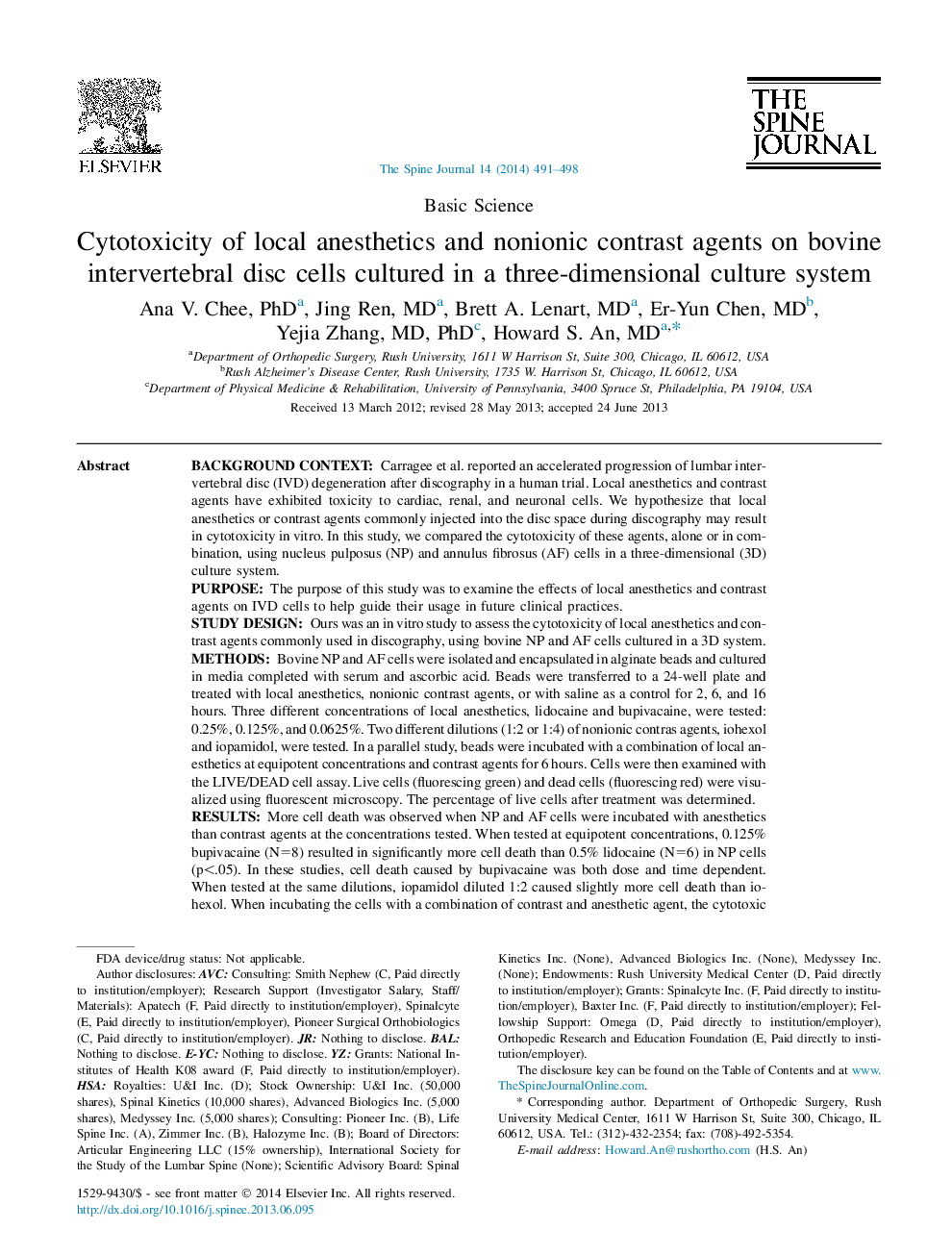| Article ID | Journal | Published Year | Pages | File Type |
|---|---|---|---|---|
| 4097877 | The Spine Journal | 2014 | 8 Pages |
Background contextCarragee et al. reported an accelerated progression of lumbar intervertebral disc (IVD) degeneration after discography in a human trial. Local anesthetics and contrast agents have exhibited toxicity to cardiac, renal, and neuronal cells. We hypothesize that local anesthetics or contrast agents commonly injected into the disc space during discography may result in cytotoxicity in vitro. In this study, we compared the cytotoxicity of these agents, alone or in combination, using nucleus pulposus (NP) and annulus fibrosus (AF) cells in a three-dimensional (3D) culture system.PurposeThe purpose of this study was to examine the effects of local anesthetics and contrast agents on IVD cells to help guide their usage in future clinical practices.Study designOurs was an in vitro study to assess the cytotoxicity of local anesthetics and contrast agents commonly used in discography, using bovine NP and AF cells cultured in a 3D system.MethodsBovine NP and AF cells were isolated and encapsulated in alginate beads and cultured in media completed with serum and ascorbic acid. Beads were transferred to a 24-well plate and treated with local anesthetics, nonionic contrast agents, or with saline as a control for 2, 6, and 16 hours. Three different concentrations of local anesthetics, lidocaine and bupivacaine, were tested: 0.25%, 0.125%, and 0.0625%. Two different dilutions (1:2 or 1:4) of nonionic contras agents, iohexol and iopamidol, were tested. In a parallel study, beads were incubated with a combination of local anesthetics at equipotent concentrations and contrast agents for 6 hours. Cells were then examined with the LIVE/DEAD cell assay. Live cells (fluorescing green) and dead cells (fluorescing red) were visualized using fluorescent microscopy. The percentage of live cells after treatment was determined.ResultsMore cell death was observed when NP and AF cells were incubated with anesthetics than contrast agents at the concentrations tested. When tested at equipotent concentrations, 0.125% bupivacaine (N=8) resulted in significantly more cell death than 0.5% lidocaine (N=6) in NP cells (p<.05). In these studies, cell death caused by bupivacaine was both dose and time dependent. When tested at the same dilutions, iopamidol diluted 1:2 caused slightly more cell death than iohexol. When incubating the cells with a combination of contrast and anesthetic agent, the cytotoxic effects of the anesthetics and contrast agent were not synergistic. In this culture system, AF cells were more sensitive to some of the agents than NP cells.ConclusionsCell death was observed when AF and NP cells were incubated in a dose- and time-dependent manner with local anesthetics and contrast agents commonly used for discography. Relative toxicity of these compounds was noted in the order of bupivacaine, lidocaine, iopamidol, and iohexol. Future studies of the effects of these agents in organ culture or animal models are indicated to predict what happens in vivo.
